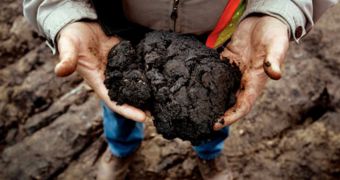It would appear that tar-sands oil simply cannot catch a break from bad publicity.
Thus, researchers in Canada have recently announced that, apart from being a driving factor of climate change, this energy source must also be held accountable for contaminating a large portion of the country's Alberta province.
Grist reports that, according to these researchers, evidence at hand indicates that oil-sands operations carried out in said part of Canada have caused a so-called bulls-eye of mercury contamination to form over said region.
The scientists say that, as far as they could tell, mercury released by these operations has thus far covered a surface of about 4.7 million acres in northeast Alberta.
In some of the areas that have been contaminated, mercury levels are 16 times higher than they are in the background, the same source details.
As was to be expected, the highest concentrations of mercury have been documented in the immediate area of the oil-sands operations.
The researchers who carried out this investigation fear that, in time, the mercury will work its way into natural ecosystems, maybe even in the food web.
Since mercury can affect the brain, the heart, the kidney, the lungs and even the immune system, they say that their discovery should be given due consideration.

 14 DAY TRIAL //
14 DAY TRIAL //